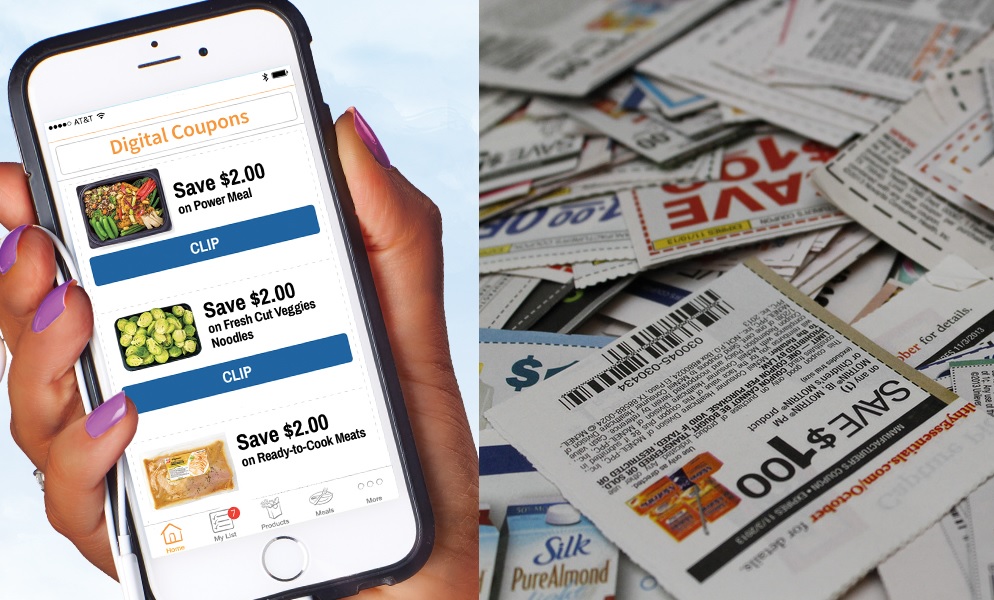
When two entities look at two similar sets of numbers and come up with two different takes on what they mean, whose explanation are you supposed to believe?
In the case of coupons, maybe a little of both and a little of neither.
For the second time in as many weeks, a major coupon processor is out with its analysis of mid-year coupon trends. And while the numbers don’t lie, they’re apparently open to varying interpretations.
NCH Marketing Services has released its Mid-Year 2018 Coupon Trends Analysis for Consumer Packaged Goods report, following on the heels of competitor Inmar’s 2018 Mid-Year Promotion Industry Analysis. Both reports provide statistics about the number and values of coupons redeemed so far this year. Give or take a few billion, both companies agreed that about 145 billion coupons were distributed in the first half of the year, down about 12.5% from this time last year. Out of those, about 900 million were actually redeemed, down about 14% from the first half of 2017. While digital coupons are becoming ever more prevalent, paper coupons still make up the vast majority of coupons both offered and used.
So what to make of these findings? NCH chose to highlight the power of paper, in headlining that “Four out of five coupons are redeemed from traditional print media”. Inmar chose to call out digital, with the headline “Load-to-Card Offers Achieve Record High Redemption”.
They’re both true – but neither summary tells the full story.
While its numbers vary slightly from Inmar’s, NCH found that just 1.7% of all coupons available so far this year have been digital (which incorporates both load-to-card and print-at-home), while a whopping 94.5% come from the Sunday newspaper inserts. Digital coupons (again, both load-to-card and printables) make up a much larger proportion of coupons redeemed – 20.8%, compared to 41% from inserts and the rest from “other” paper formats.
“The NCH analysis indicates that free-standing inserts (FSI) remain the primary distribution channel for coupons,” NCH found, noting that the format’s continued dominance “reflect(s) its scale of consumer reach”.
Inmar, meanwhile, said its own analysis “revealed a continued trend of load-to-card coupons becoming more widely adopted by marketers and shoppers alike”. Digital paperless coupons “continue to be redeemed at a disproportionately high rate relative to total distribution,” Inmar noted.
And while it didn’t take any jabs at printable coupons this time, Inmar has previously proclaimed the “demise of print-at-home coupons”, saying that its analysis showed the format was beginning to “fade into the sunset”.
So why would NCH be playing up paper, while Inmar praises paperless and poo-poos printables?
It wouldn’t be cynical to suggest that it has something to do with the fact that NCH parent company Valassis publishes the RetailMeNot Everyday (formerly RedPlum) coupon inserts, and Inmar runs a number of retailers’ digital coupon programs and recently announced the imminent end of its printable coupon portal Hopster.
So there’s some self-interest involved in the way the stats are spun. While the companies’ number-crunching does provide a service for the industry and some insight into the state of couponing for the rest of us, it must be noted that they also serve as promotional efforts for the services that each company provides.
“Despite this record growth” in digital coupons, Inmar said in what could be construed as a subtle pitch to potential clients, “there is still a tremendous opportunity for brands and retailers to make load-to-card a larger part of their promotions mix.” NCH, meanwhile, acknowledged that “incorporating digital into the marketing mix is critical,” but warned potential clients not to turn away from the traditional paper coupon inserts (like RetailMeNot Everyday!), suggesting that “marketers need to optimize the right amount of print and digital together to maintain the benefits coupons bring to brands”.
For what it’s worth, Coupons in the News‘ main takeaway on the mid-year stats was that, whatever their format, the number of available coupons has declined precipitously, while the redemption rate falls even faster, approaching a level not seen in generations.
And that’s not an analysis that any company whose very business is coupons is necessarily going to embrace. But they’re the ones who crunch the numbers, so they’re the ones who get to decide to focus on the positive.
So never mind that there have been fewer coupons available so far this year than at any time over the past decade, and that the coupon redemption rate is on pace to be the lowest since the early 1970’s. What matters is that everybody loves digital coupons, and paper coupons are still great too!
In our current climate, where facts are relative and “truth isn’t truth” – the same facts and figures can tell very different stories. In this case, as in others, it all just depends on who’s doing the telling.













